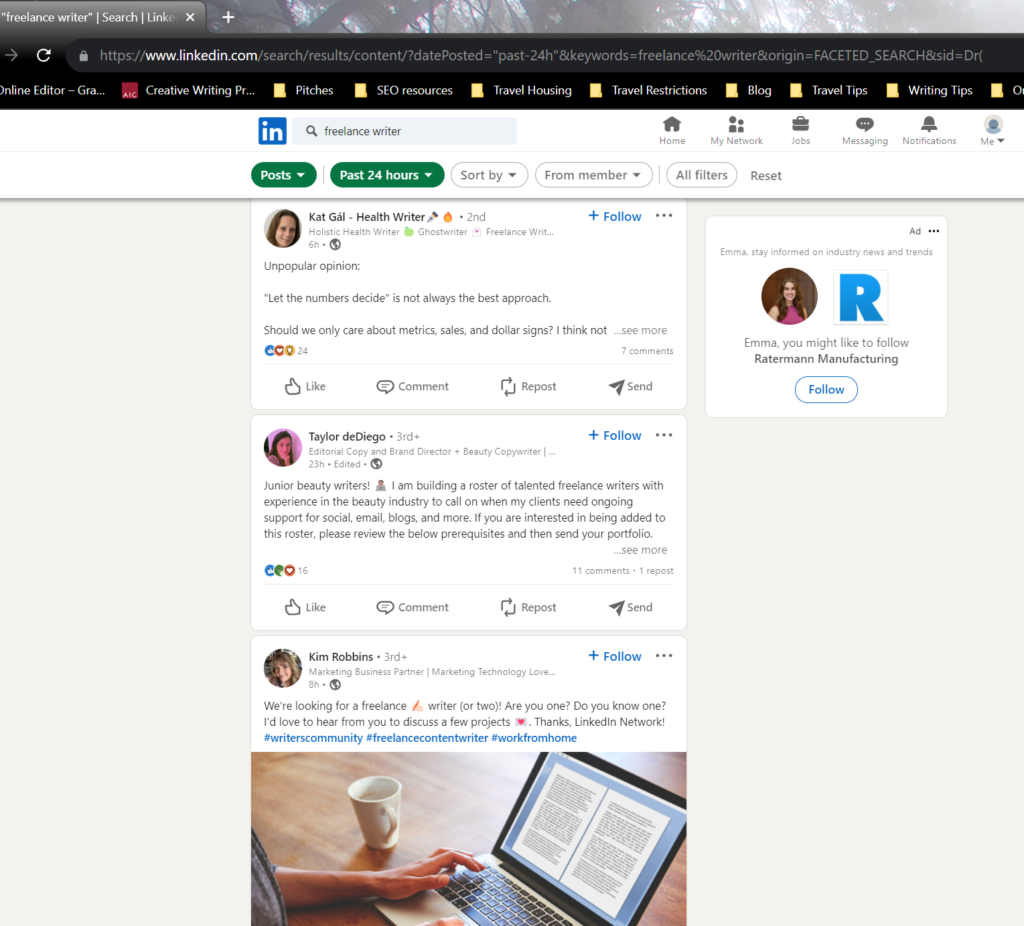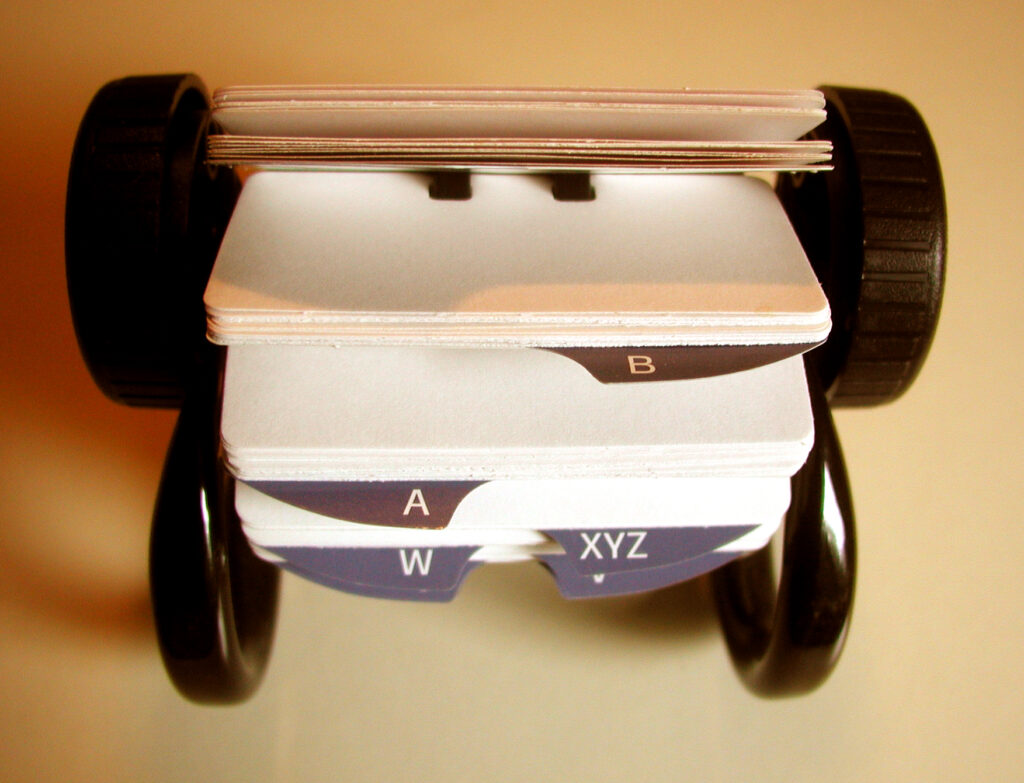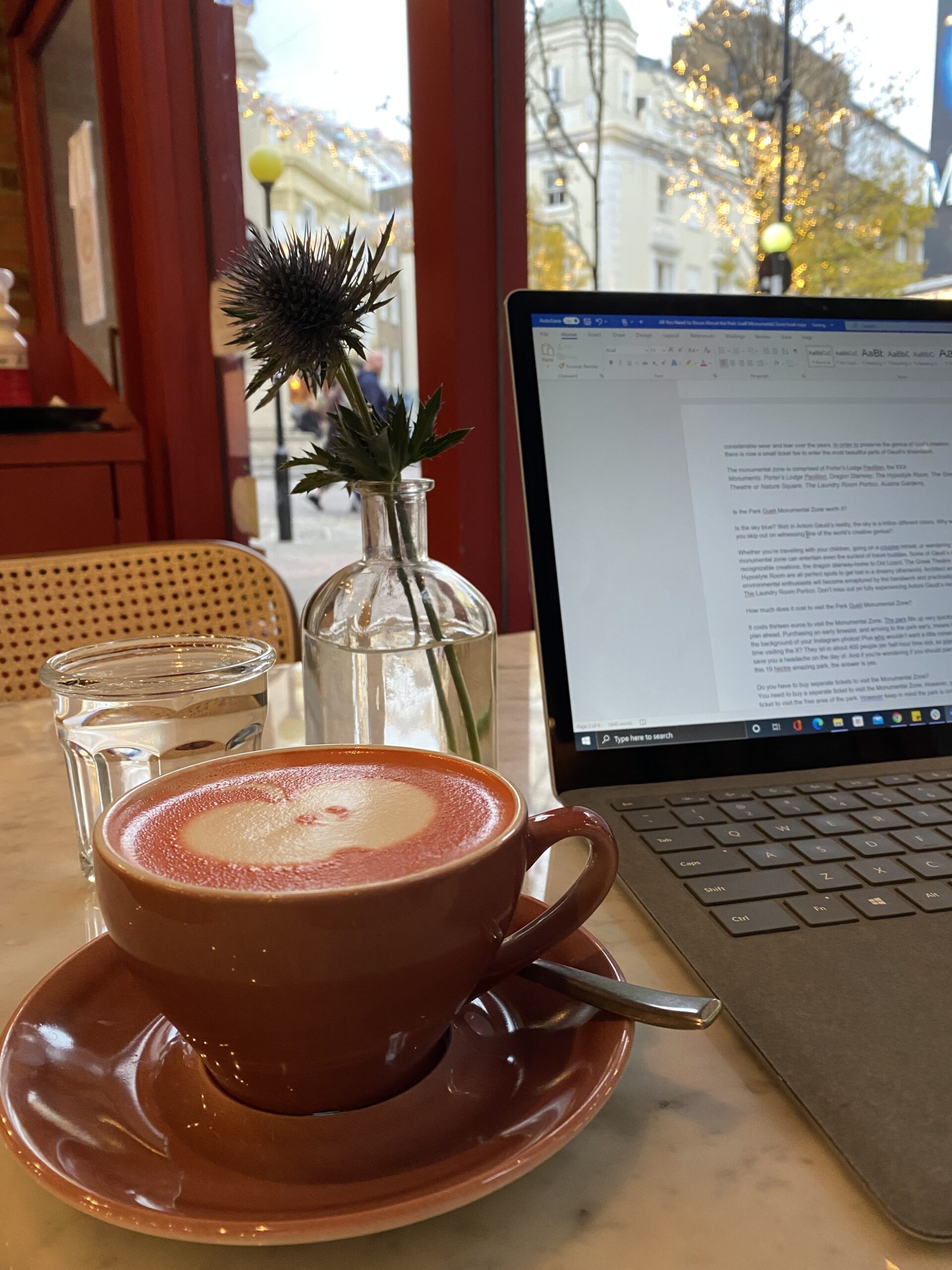8 Steps to Get Started as a Beginner Freelance Writer
Going from small-time to big-time as a beginner freelancer is no easy feat. TBH, I’m still figuring it out, and it’s not always a straightforward, linear path.
My first gig was writing music articles for Ticketmaster. The pay was mindblowing for a newbie freelancer, and it made me realize I could turn this side hustle into a full-time career.
Within a couple of months, I left my well-paying (but torturous) 9-5 job and jumped headfirst into the freelance life.
Truthfully, I did not land gracefully. Do not be fooled by the fantasy of giant leaps of faith. There’s an online narrative that anyone can make easy money from blogging and freelance writing. Some people even package it as “passive income,” when in reality, it’s anything but passive.
Some freelancers start off closer to the finish line than others. Some begin with an already established online presence, relevant industry experience, or the most desirable- a profitable niche. Any of these traits can put you miles ahead of freelancers starting from square one.
If you’re like me, starting from square 1 or 0.5, there are a million steps to take before earning a full-time income.
I do have a few tried and true methods that have helped me grow my business. So, if you’re looking for a no-BS, comprehensive guide to put you on the right track, then look no further than this post. I guarantee it’s newbie-tested and approved.
Step #1: Use LinkedIn for job leads
I’ll offer my #1 tip right off the bat. LinkedIn is one of my main sources for locating client/job leads. I do not like Fiverr. I could never quite hack the algorithm, and I found Upwork to be a waste of time. Here’s how to make the number one employment site work for you.

Go to the search bar, type in “freelance writer” or “hiring writers” or something similar. Filter it to LinkedIn posts only. Here, you’ll see filtered posts from people hiring and looking for freelance writers. You may have to sift through inspirational messages and random posts, but there are dozens of gems in the rubble. This trick narrows down the competition by searching through posts instead of job boards.
After you find a gig that’s a good fit for you, send a direct message to that LinkedIn member. I explain why I am a good fit for the job and pass along my portfolio + resume.

If I’m out of in-mail credits, I’ll send a connection request along with a shortened message of the above. By directly messaging potential employers, you’re suddenly miles ahead of those applying through a job application. You’re welcome! 🙂
Extra tip: I like to spend half an hour a day looking through these LinkedIn posts. I do it daily, so I filter the posts to the past 24 hours. The posts get very popular after 24-48 hours, so don’t hesitate to send a message!
Step # 2: Have you checked your bank account?
Do you have 6-12 months of living expenses saved up? Please don’t skip past this basic advice.
I wish I started freelancing when I still had my full-time job. I assumed I couldn’t do both, so I dumped the full-time gig. Truthfully, I was terribly unhappy at my 9-5 job.
In reality, I struggled financially for a few months. That incredibly paying music gig? Simply disappeared. This can happen quite frequently–opportunities that I thought were set in stone just didn’t pan out.
I watched every dollar I spent. I moved back to my parent’s house to avoid paying rent. Even if you think you have enough money saved up, save a little more. Put aside that nest egg, and don’t reach into the cookie jar for anything non-essential. Start saving now and start freelancing while you already have a job.
Overcoming the learning curve takes a bit of time, so it’ll be easier to do it while you still have guaranteed income.
Step # 3: Reach out to old contacts

If you didn’t storm out of your office yelling I QUIT and completely burn all old bridges to the ground… then you may have a business opportunity in front of you.
Reach out to old colleagues to see if they could use a freelancer or know someone looking for one. Everyone knows somebody who knows somebody who’s looking for somebody like YOU.
One of my first gigs was recommended to me by an old coworker who knew I went freelance. That gig turned recurring and quickly became one of my favorite clients. You’ll never know if you never ask.
Step # 4: Optimize your resume and LinkedIn profile
A lot of people look over how important it is to have a quality, high-performing resume and LinkedIn profile. Grammar errors, lack of keywords, and poor descriptions won’t put you on the hiring list anytime soon.
Your portfolio of work should speak for itself, but most clients will also ask to see your resume, and your LinkedIn profile should be optimized to help you reach new clients.
Check out my post about how to make your resume and LinkedIn profile to your advantage.
Step #5: Have a backup job
This advice might not be everyone’s favorite cup of tea. Many of you are probably thinking: isn’t the point of going freelance meant to supplement my regular old job?
Stick with me for a second, but guaranteed income can take the pressure off your freelance journey. You’ll unlikely make $100,000 in your first year or year two of freelancing. It’s not common.
Consider working in a coffee shop, pet sitting, or tutoring on the side. I recommend choosing a part-time job that’s not too strenuous, so you still have the energy to put back into freelancing.
Step # 6: Collect online certificates
This is another bit of advice I need to take myself. One time, in an interview, a potential client asked if I had any Google certificates. I was ashamed to say that I hadn’t pursued this yet, but it’s been on my list for a while now.
Stop saying you’ll do it next week, and set time aside to get some certificates to make you stand out from fellow freelancers. It’ll make your portfolio look more official and make or break a client hiring you.
Google has some great certificates worthy of the investment. LinkedIn also has courses that will show up on your profile. That extra little effort can make you stand out from the sea of freelancers.
Step # 7: Make a plan for your freelance journey
I’m very much a learn-on-the-go type of freelancer, which is fine, but some more organization never hurts.
I wish I had set a plan before beginning my journey. The learning curve may have been less steep, and I could have pursued opportunities sooner.
Setting goals for yourself every month, like learning goals, monetary goals, and client goals, can help keep you on track and stay motivated.
It’s important to measure your success in ways beyond income so you can be fully satisfied pursuing this career.
Step #8: It’s going to take time
Even though some of these articles and tiktokers claim to be an overnight success, that’s rarely the case.
The truth is that real success takes time. You have to stick with it, constantly pivot, and be creative. Becoming a successful freelancer is possible, but it’s going to take time.
Just know that it’s a journey, with really good months and poor months and highs and lows. The low moments don’t define your success, and the good moments are sure to return.
Keep your head up, stick with it, and good luck!
Happy mystic wanderings,
Emma
